Hunting contents
Homepage
Contact
DUCKS IN PICARDY
A day & night at the "Hutte des 400 coups"
A Unique
and Exotic Duck Hunting Trip to the Baie de Somme
by Kenneth D. Gartrell
Pictures
under the text
December of
2005, my wife and my oldest son accompanied me on one of our routine
trips to
Europe. In the first phase, we had the pleasure of observing the
Bicentennial
reenactment of the Battle of Austerlitz and we made our way back from
Vienna by
way of the overnight train to Paris.Once in Paris, we met up with our
friend
and sporting guide, the incomparable Nick. On arrival, we enjoyed a
good
night’s rest in the quiet luxury of the Pavillon Henri IV above
the banks of
the Seine at St. Germain en Laye, we had our breakfast looking to Paris
and
writing those lines, I am thinking about Alexandre Dumas and Ernest
Hemingway
who liked to stay there before me. By mid-morning, we were headed on
our way by
car North and West around Paris through Normandy and into Picardie. In
about
three hours we arrived in the village of St. Valery sur Somme at the
estuary of
the Somme River and on the tip of the Baie de Somme.
We arrived in early afternoon and at low tide. While it was a grey day,
the air
was full of adventure and excitement. I know I can always count on Nick
for a
well-planned adventure, but little did I know that I was about to enjoy
one of
the rare sporting adventures that any American with an interest
in wing
shooting and waterfowl could imagine. At St. Valery sur Somme, we had
arrived
at the hub of the waterfowl Mecca of France. The Somme is a region of
France
replete with a rich past, having played a part in many great events in
history.
Many soldiers have trod the ground of the Somme over many centuries.
Joan of
Arc, for example, was held captive in St. Vallery sur Somme, but also
William
the Conqueror sailed from there to join the famous region of Hastings
for the
battle that would create the kingdom of England as we know it now. More
recent
and less glorious, the Chinese cemetary in the village of Nolette,
recalls the
thousands of workers who lost their lives during the 1st World War to
simply maintain
railroads (not to speak of the battles in the trenches farther east).
The
sense of history provided by this inspiring spot near the Pas de Calais
is
everywhere and captivating.
St. Valery sur Somme is a typically enjoyable rustic French village. It
has
beautiful old buildings and all the charms of the French life. There
are fine
bakeries for your "baguettes" and rustic restaurants where you can
enjoy the pleasure of French cooking. There are shops for gunsmiths and
the
sportsman will not go wanting for needed items, including ammunition
(except in
28Ga), or that Laguiole knife that you must have to cut your cheese and
open
you wine at the gourmet sporting picnics that a fine guide like Nick
will
prepare for you and your guests.The obvious quality of the village is
the
reflection of the life at sea. The streets and the houses will remind
Americans
of mythical places such as Nantucket and coastal Maine or seaside
villages on
the coast of California and Washington state. A prominent sea-loving
resident
of St. Vallery sur Somme was the famous fiction writer Jules Verne. It
does not
require much imagination to envision the balloons and gondolas of
Around the
World in Eighty Days crossing at the Pas de Calais and floating in the
sky
above the village. One can see why Mr. Verne was at home in this
location.
After a nice walk around the village, we decided to wait for the local
Patisserie to reopen from the traditional mid-day break. Nick knew just
what to
do and we headed to the famous restaurant and hotel called Mado. Mado
is a
center for visitors and an extremely popular spot for the water fowl
fanatics
who make their way to the Baie de Somme each season to partake of one
of the
great migratory spots in the world. Mado is famous for its food
and its
hospitality to the devotees of the waterfowl. From its window, one can
look out
to points of the Baie de Somme and onto the mouth of the Somme itself.
At this
time of year in early December, the hunters are not present in large
numbers as
the migrations are not at their peak. There is, nevertheless, enough
migratory
activity that during low tides the solitary water fowl hunters with
their loyal
Labradors can be seen making their way into the shallows where they
will take
their spots for the evening flights. Mado was very happy to serve
us a
glass of champagne, afternoon tea and espresso. We had the
pleasure of
sitting at the large table near the bar and we had the opportunity to
enjoy all
the wonderful etchings, paintings and other decorations in the honor of
the
waterfowl and the hunting dogs of the area.The staff was very friendly
and we
struck up a pleasant chat thanks to Nick who helped translate for us
when our
polite bonjours and mercis would no longer sustain conversations. The
manager
has been at Mado for some time and she was very interested in our trip.
She was
proud to show us articles from such sporting publications as the
French Revue Nationale de la Chasse for which Nick is a
regular
contributor.
About ten kilometers South and East of St. Vallery sur Somme and on the
Northern edge of the Baie de Somme, we passed briefly through the very
small
village of Noyelles sur Mer. The village has just a few houses, shops
and a
rail station. Just a few kilometers out of the village, we turned
down the
lane to arrive at the entrance of the Hutte Des 400 Coups or "Hut of
400
Shots". My wife remarked that it was a nice enough little cottage.
Being
familiar with the common mode of duck hunting, I too was ready to sleep
the
night in this nice little cottage and proceed to the usual duck blinds
early in
the morning for the morning flight. I was not traveling with waterfowl
gear, so
I just assumed that Nick had that all planned and taken care of in
complete
detail as he always does.
The Hutte of 400 Coups was built by a wealthy Parisian Viscount, the
vicomte
Brossin de Méré, who actually owned the rail line
connecting Picardie, Calais
and Bologne to Paris. We were headed back into the 19th Century when
France was
expanding economically by the spread of its rails system, which even
today
links the major cities and towns in the country with the Parisian hub
of
industry, government and culture. The Hutte lies at a comfortable
distance from
the rail station at Noyelles sur Mer. During the times of the Viscount,
a rise in
the migratory activity over the Baie de Somme would result in telegraph
and
telephone messages to Paris. Within hours the Viscount, his wife and
waterfowl
friends, would arrive at the station in Noyelles sur Mer where a game
keeper
would take them for a quick carriage ride to the Hutte.
Little did we
suspect as we unpacked the gear for the night, all the interesting
surprises to
come… Nick had laid his traps well. As we stepped towards the
cottage, I
noticed that Nick was headed the opposite way. The first big surprise
then
materialized as we learned the charming cottage was not the actual
Hutte. The
Hutte des 400 Coups is actually a well-camouflaged duck blind sitting
along the
point jutting into the one-acre pond surrounded on all sides by swamp
and wetlands.
The site has the look and feel of nature, but the pond, the Hutte and
all the
immediate surroundings; are elements of an elaborate man-made system
for the
attraction, observation and hunting of the waterfowl flying over the
Baie de
Somme. We had been tricked into thinking the game-keeper’s home
was the
Hutte. Nick didn’t say, but I‘m sure this was his
plan. He had been
reluctant give much specific information about the Hutte to that
point. On
the way into St.Vallery sur Somme, Nick had made it a point to stop and
show me
the more typical but upscale huts and blinds. They are found all over
wetlands
near the Baie. At low tide, explaining in retrospect the carefully
chosen plan
of arrival, I could walk among the various huts. Usually they are small
covered
floating blinds (they seem to be buried in the silt but
they raise up
and float during the high tides. They're anchored by 4 big
chains, sitting
next to equally small man-made ponds about the size of a home swimming
pool and
about two feet deep. In front of the huts, sit a small flock of twenty
or
thirty tarred wood decoys. In these natural surroundings, it takes
a few
minutes before you realize that these ducks are not moving and are not
live.
I was fooled a second time by the decoys in front of the Hutte des 400
Coups.
The natural ambience of the entire area is part of the illusion.
Waterfowl is
everywhere. The sound of ducks and geese mix with the flight of egrets
and sea
gulls to distract the eye, the ear and the mind in the lowland mist.
Once I
stepped in front of the Hutte on the bank of the pond, I realized the
shadowy
figures on the water were the same style decoys as earlier. They were
much more
in number – maybe a hundred – all befitting the
surprise yet to come. The
power of the illusion of the decoys flows directly from the fact that
the
Hutte, as well as the gamekeeper’s cottage, are surrounded by
live decoy ducks
and geese. This is also a surprise and a treat for duck hunters
because
France is the only place in the world where live decoys bred and
selected for
the quality of their voices are allowed to call the wild
congenere.
The uninitiated I talk to often take offense to the use of the live
decoys
thinking it cruelty to the decoy ducks. But, the fact is these ducks
are
carefully bred, highly revered and extremely well cared for. The more
obvious
reason that live decoys are not allowed outside France is that they
contribute
to a lethal attraction for birds flying over. Their calls are beautiful
and
exotic as they reach a fever pitch of excitement in unison as wild
ducks or
geese fly over the area. The beauty of the interaction between the
“private ducks" as Michael pointed out (Nick’s brother and
a dedicated
water fowl hunter who came to stay with us later in the day) and the
wild fowl
is an intoxicating and pleasurable phenomenon that must be experienced
to be
fully appreciated. Only by sharing the experience, observing the care
and
dedication of French waterfowl hunter’s, can one reach a
competent judgment
about virtues of the sport and the implications for the delicate game.
Inside the main features of the hut, hunters can relax, eat, play cards
even
watch television in the hours they spend at leisure waiting for the
wild
waterfowl to fly over and be attracted to the pond. On the walls of the
hut,
facing the water of the pond, are covered openings for observation.
When it is
time to shoot, these openings can be folded down and guns can be
mounted for
shooting. Flights are largely concentrated in the dark hours between
dusk and dawn.
As usually the case, the flights are most intense at the dusk and dawn
transitions. There are continuous flights, nevertheless, and the
aroused
appeals of the “private ducks” call the hunters to duty at
all hours of the
night. Upon arrival we had seen a brace of the Europen equivalent to
our green
winged teal, then later a nice flock of about 30 of the same, but all
out of
reach. Unfortunately for us, our stay was on a night when there was a
very
thick mist over the water of the pond and night shooting was out of the
question. We were confined to hunt the swamps for snipe in the daylight
before
dusk and to wait in the removed outdoor blinds for the evening and
morning
flights. Nick's French Brittany spaniel beautifully
pointed a
few snipes (common snipe "Gallinago, gallinago Linné", and Nick
shot
one, then only Michaël saw a couple of teal during the
evening flight but
missed. Despite the fact that there was no shooting in the night, the
pleasure
of sleeping in a warm comfortable cot, while listening to the calls of
the
decoys and the wild fowl flying over was a great pleasure and honor. It
provided a significant aesthetic experience on a par with any symphony,
opera
or other great work of art.
Nick showed us the milestone that lies in the hut complex to mark the
You can bring your guns into the main hut. But, you have to leave your
boots at
the door. You need to either bring some slippers to wear inside or you
can use
some of the slippers provided by the host. This was the one thing Nick
had been
careful to tell me ahead of time. The main hut consists of a small
kitchen, a
pantry, a sitting room and two small bedrooms with two single cots in
each. It also has a working bathroom, though there is no shower
(there's
one in a dependance outside, but probaly used only to refresh from hot
summer
days... but not appealing for ice cracking winter nights like
ours). The
front bedroom, the ante space between the sitting room and the outer
walls of
the dining room look onto the pond and this is where the openings are
located
for night observation and shooting. The dining area is the only place
in the
hut where anyone taller than five feet and five inches can stand
upright. Despite
the fact people were shorter then, I rather assume the vicomte was
incorporating some of the customary discomforts of duck hunting for his
design
in order to retain the traditional sense of experience. The decorations
of the
hut are rustic and traditional; specimens of local fowl adorn the wall
and
shelves. For our evening repast, Nick prepared one if his incomparable
meals. Many
delights of pate’ of wild boar, stewed partridge breasts, French
wines and
Winston Churchill's favorite Pol Roger Champagne, cheese and pastries
were
enjoyed by all. I used my trusty laguiole to spear many of the fine
"Mirabelle" plums soaked in an exotic distilled spirit collected by
Nick in his gourmet travels of the French countryside.
We were at
the Hutte des 400 Coups very late in the migratory season. So, it was
neither a
surprise nor a disappointment when our morning shooting was not
occasioned by
hundreds of wild fowl. Two geese flocks passed slightly too high just
above us.
The extravagant beauty of the morning sun; the refrain of the
“private ducks;”
along with a trek into the wetlands for snipe were perfect
compensation.
As we prepared to depart we all took the extra time to savor our good
fortune.
Nick believes that my wife, my son and I were the first American
visitors to
this unique place since World War II and shortly after. Since I am not
a highly
experienced water fowl hunter, some of the great joys of this place may
have
been wasted on me and so I encourage the more dedicated practioners of
the
sport to contact Nick to try the same unique experience.
The French, the Germans and other Europeans believe the only way to
hunt and
fish responsibly is to be well educated in wildlife. As a clear example
of the
benefits of this approach, the use of live decoys in France can be
permitted
because hunters are loyal to the game; loyal to the traditions; and
responsible
enough in their approach not to harm the waterfowl population. The
delicate
balance of the incomparable art form at Baie de Somme depends on
responsible
hunters. In turn, the very existence of the delicate wild game we love
depends
our mutual efforts not to give critics of sporting excuses to
interfere. There
is no way for anyone who has not experienced the thrills of a night of
hunting
the Baie de Somme to appreciate the delicacy and value of
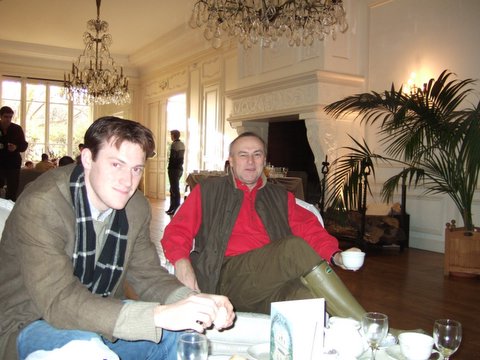
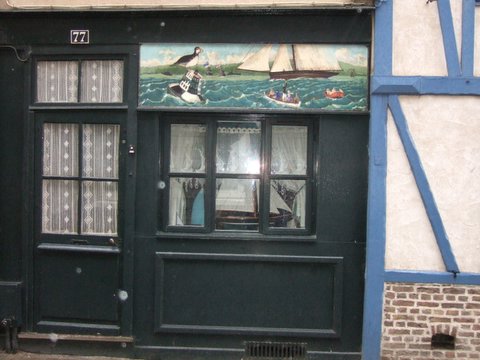
House in the village of Saint Valery sur Somme
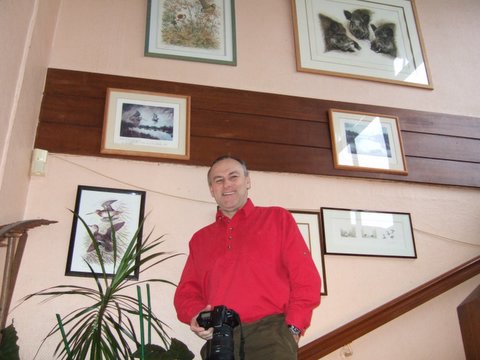
At "Mado's" an extremely popular spot for the French wildfowl fanatics
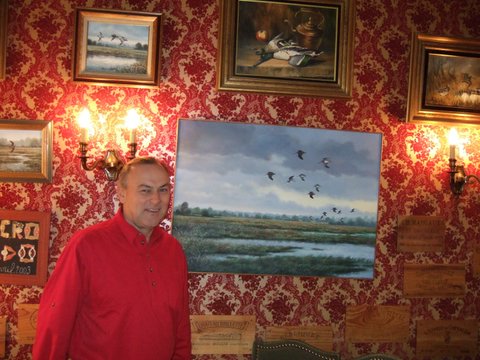
Wonderful etchings, paintings of waterfowl and the hunting dogs.
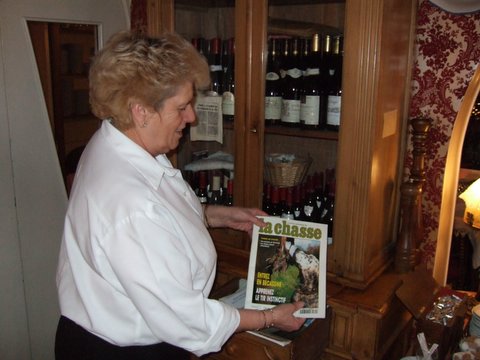
Mado was proud to show us articles from such sporting publications.../...
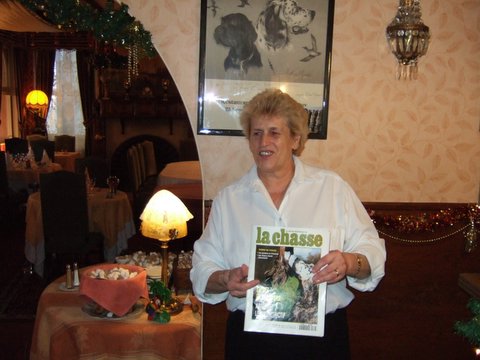
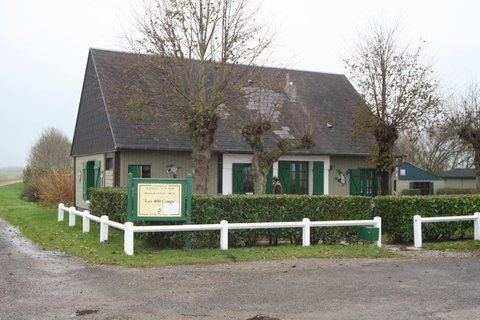
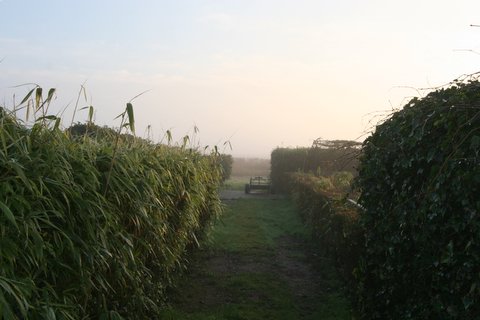
The actual "Hutte" is reached at the end of this camouflaged path
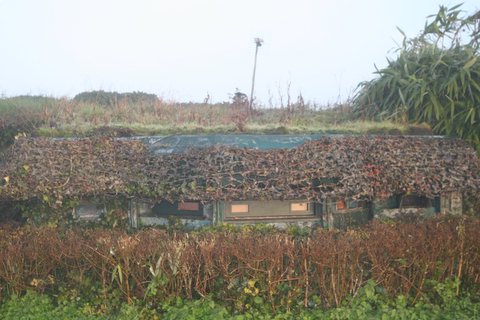
And is pretty camouflaged as well !
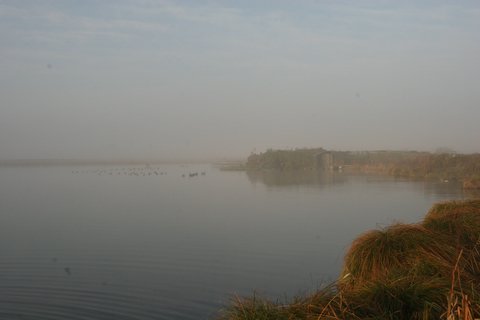
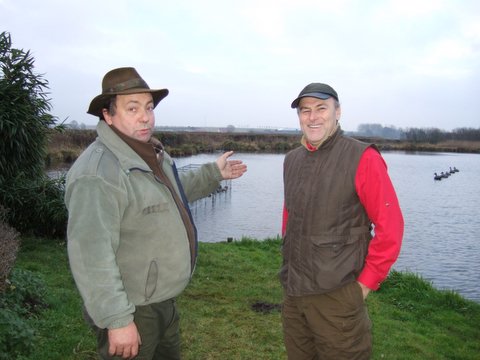
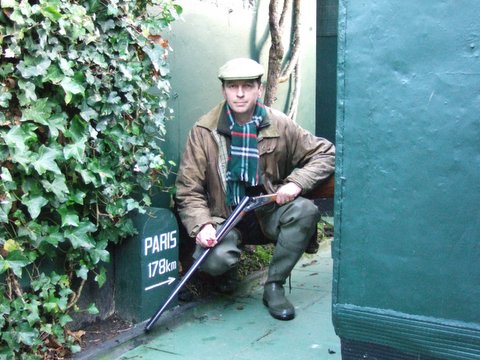
Nick
showing the milestone that lies in the hut to mark the
s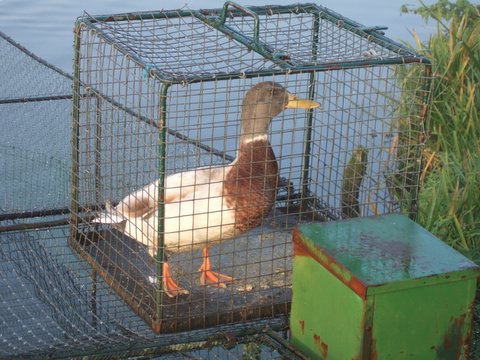
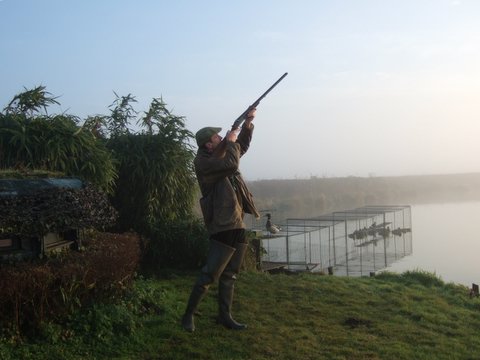
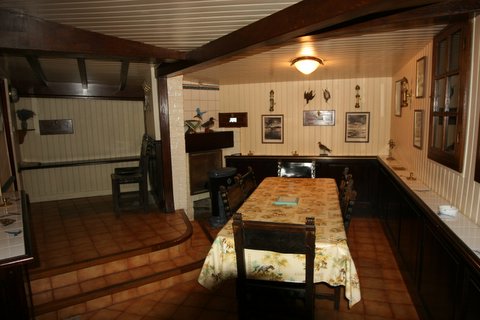
The dining room when stepping in. All this buried and hidden like a luxury bunker
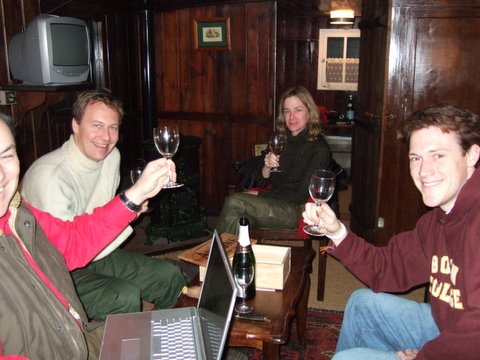
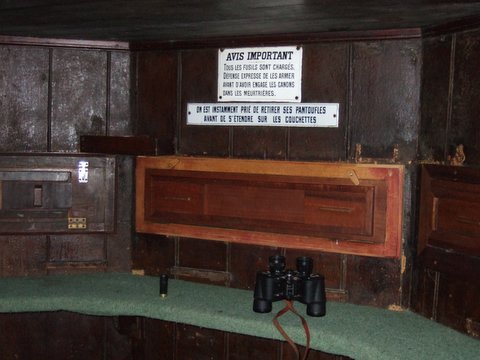
The walls of the rooms, facing the pond have openings for observation...
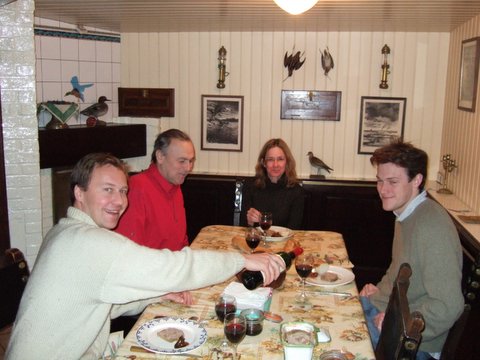
Now the long, painful wait can start !!! (Et la longue attente commence).
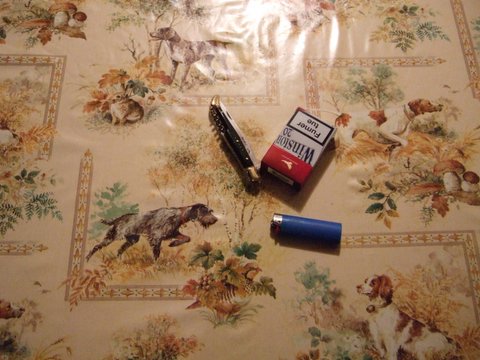

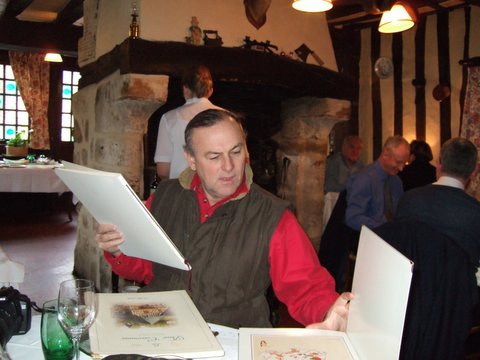
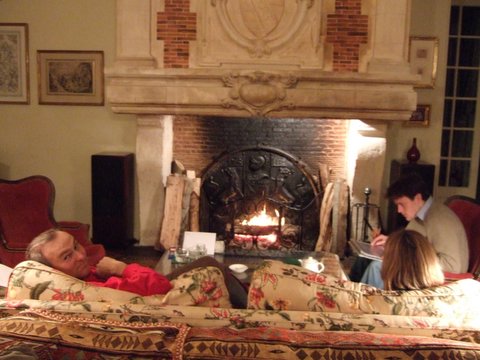
And our new... "base camp" in Normandy now.
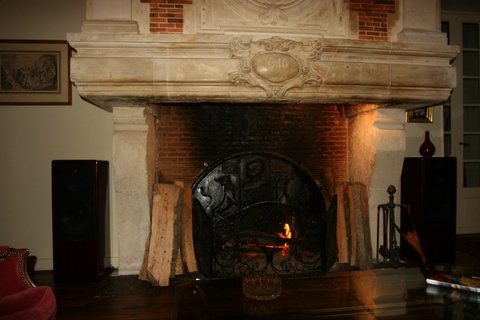
A wonderful XVIth century castle, lost in the woods
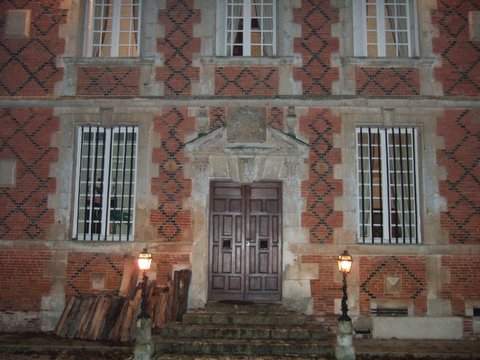
Where we stayed for a couple of day's upland wingshooting,
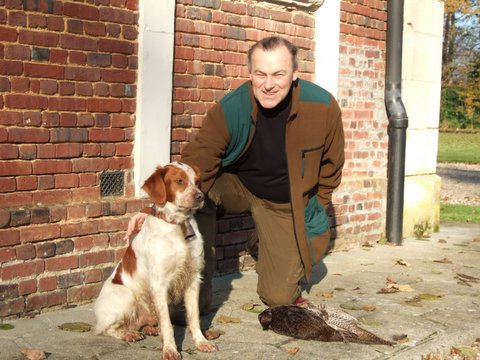
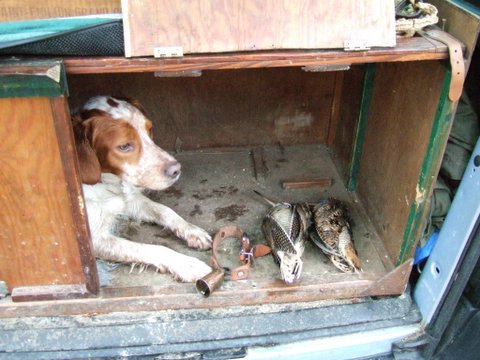
Back to top
Back to ducks Page - 1 - 2 - 3
Continue the trip to the Sologne region